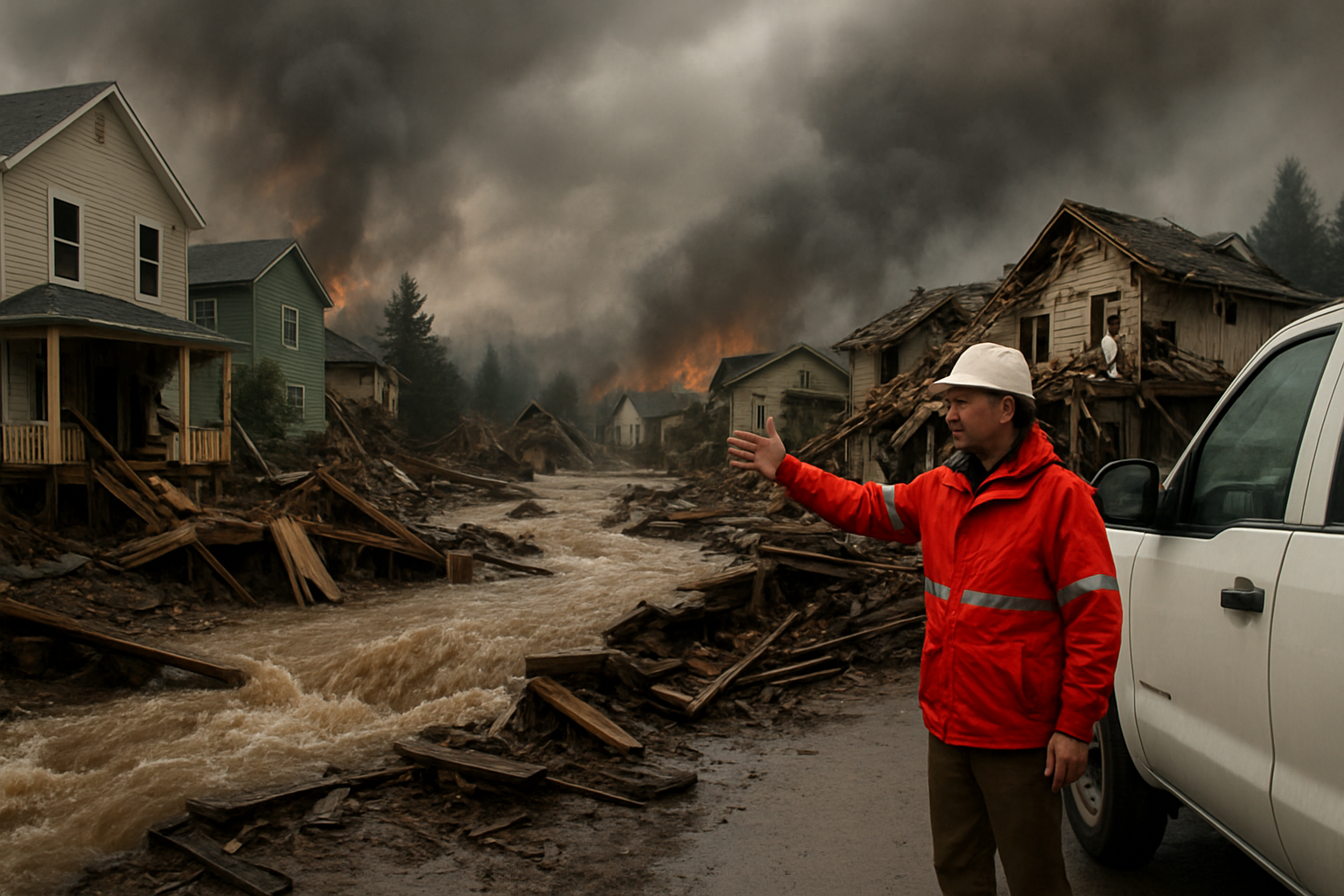How Climate Change Is Increasing the Frequency of Property Disasters in Colorado and Illinois

How Climate Change Is Increasing the Frequency of Property Disasters in Colorado and Illinois
Meta Title:How Climate Change Is Increasing the Frequency of Property Disasters in Colorado and Illinois
Meta Description:Learn how climate change is driving more property disasters in Colorado and Illinois, and discover strategies to protect your home and business.
URL Slug:how-climate-change-is-increasing-the-frequency-of-property-disasters-in-colorado-and-illinois
Introduction
Climate change is no longer a distant concern—it is a present reality that is reshaping daily life in Colorado, Illinois, and across the nation. For property owners, the most pressing consequence is the growing frequency and severity of natural disasters. From flash floods in the Rockies to tornadoes sweeping across the Midwest, changing climate conditions are creating new risks and compounding existing ones.
Understanding how climate change is increasing the frequency of property disasters in Colorado and Illinois is crucial for homeowners, landlords, and business operators. By recognizing patterns and preparing accordingly, property owners can take proactive measures to safeguard lives and assets.
TLDR – Quick Guide
- Rising temperatures intensify storms, floods, and wildfire risks.
- Colorado faces increased wildfires, flash floods, and snowmelt-driven disasters.
- Illinois is experiencing stronger storms, tornadoes, and urban flooding.
- Property damage costs are climbing due to more frequent disasters.
- Proactive planning and experienced restoration services reduce long-term losses.
How Climate Change Is Affecting Colorado
Wildfires and Drought
Colorado’s high-altitude environment is increasingly vulnerable to extended droughts that dry out vegetation. These conditions create fuel for larger, faster-moving wildfires that can devastate entire neighborhoods. Property owners face higher insurance costs, structural fire risks, and long-term recovery challenges.
Snowmelt and Flash Flooding
Rising spring temperatures accelerate snowmelt in the Rocky Mountains, leading to flash floods downstream. Communities in valleys and near riverbanks are particularly at risk. The combination of heavy precipitation and rapid melt cycles makes Colorado’s flood season longer and more destructive.
How Climate Change Is Affecting Illinois
Severe Storms and Tornadoes
Illinois, located in the heart of Tornado Alley, is seeing an uptick in storm severity due to climate change. Warmer air masses fuel supercell development, increasing the likelihood of destructive tornadoes. These storms damage roofing, siding, and infrastructure, leaving homeowners with costly repairs.
Urban Flooding
In Illinois cities, aging infrastructure is struggling to keep pace with more frequent and intense rainfall. Urban flooding is now a year-round concern, damaging basements, foundations, and roadways. Homeowners must adapt by improving drainage systems and waterproofing properties.
The Economic and Emotional Costs
The financial impact of property disasters is rising sharply in both states. Beyond repair bills, homeowners must navigate temporary displacement, increased insurance premiums, and potential property devaluation. Emotionally, the repeated stress of recovery can take a heavy toll on families and communities.
Key Takeaways
- Climate change is driving up the frequency and intensity of property disasters.
- Colorado faces greater wildfire, drought, and snowmelt flooding risks.
- Illinois is more vulnerable to tornadoes, storms, and urban flooding.
- The economic and emotional costs of disasters continue to escalate.
- Preparedness and trusted restoration partners are critical to resilience.
FAQs
1. How does climate change make property disasters more frequent?
Climate change alters weather patterns, leading to more extreme conditions such as heavier rainfall, hotter summers, and longer droughts. These changes create environments where natural hazards like floods and wildfires become more common. Property owners face higher risks as these events occur more frequently.
2. Why are Colorado homes at greater risk today?
Colorado’s mountain climate is sensitive to temperature shifts that affect snowmelt and fire conditions. Warmer winters mean less snowpack stability and faster runoff, leading to floods. At the same time, prolonged droughts dry vegetation, fueling wildfires that spread quickly through communities.
3. What property disasters are becoming worse in Illinois?
Illinois is facing more powerful thunderstorms, tornadoes, and severe rainfall events. Cities in particular suffer from urban flooding because older drainage systems cannot handle the volume of water. As storms intensify, more basements, streets, and properties are left underwater.
4. Can homeowners prepare for climate-driven disasters?
Yes, preparation can significantly reduce damage. Homeowners can install sump pumps, fire-resistant materials, and improved drainage systems. Additionally, creating emergency plans and reviewing insurance coverage ensures families are better protected.
5. How do professional restoration services help after disasters?
Restoration professionals provide rapid response to limit damage, from water extraction to fire cleanup. In states like Colorado and Illinois, local expertise is crucial because climate challenges vary regionally. Choosing experienced teams ensures faster recovery and safer repairs.
